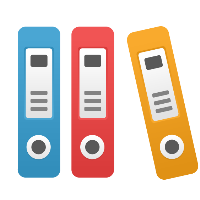Resource
Resource objects represent the resources required to perform processes, including organizational structure, functional roles, people, tools such as computer systems and physical equipment, physical locations, and information technology (IT) architecture.
The resources you define in an iGrafx Platform repository are referred to collectively as the Resource Model. The Resource Model defines the various resources known to the repository and enterprise model. A Resource object can contain child resources, and so can describe the entire resource structure of your enterprise.
Resource objects reside in the Resources top-level repository tree folder.
The Resources tree in the iGrafx Platform repository can also include SAP Resource Folders and Objects that represent the SAP End User Roles and Logical Components that support SAP Transactions and Process Steps, as well as Organizational Units that support SAP Projects and Scenarios.
![]() SAP functionality is retired. Existing SAP objects are retained, though new SAP objects and connections may no longer be made.
SAP functionality is retired. Existing SAP objects are retained, though new SAP objects and connections may no longer be made. ![]()
Resource objects can have relationships to most enterprise objects, including Strategies, Goals, Controls, etc.
Create a Resource
To create a new Resource:
- In the repository tree, click the text name to highlight the repository's top-level Resources folder or click the text name of one of the objects in the Resources folder
- Click the ADD OBJECT button at the top of the repository tree
- Click the Select Type drop-down and choose Resource
- Define the Details as desired. When setting the Resource Type, see the Resource Types discussion below.
- Click FINISH
Resource Types
A robust set of default resource types is included in the iGrafx Platform, but your administrator can create other resource types as needed, as described in Managing Repository Resource Types.
You can change the Resource Type of an existing Resource on the SETTINGS tab, by selecting a new setting from the drop-down Resource Type list.
Resources are organized hierarchically as desired by the user, but there are restrictions to be aware of:
- Children of a resource must have the same root Resource Type as the parent resource. For example, a resource named "Marketing" of Resource Type "Group" can have a child resource "Web Marketing" of Resource Type "Role" if "Group" and "Role" are both defined as sub-types of "Organization" in the Define Resource Types dialog box (Resource Types on the Model menu). In this scenario, the root Resource Type is "Organization." There are five built-in root Resource Types: Organization, Labor, IT Architecture, Tool, Infrastructure, and Location.
- The built-in "Person" Resource Type is an exception to the normal restriction. Resources of type "Person" can be children of Labor and Organization resources and their sub-types.
Creating Model Resources from iGrafx Platform Users
You can also create resources from the users registered in the iGrafx Platform by linking those users to resources that represent them, as described in Linking Users to Resources Automatically.
Resource Object Settings
Resource details are assigned at the resource level on a Resource object's SETTINGS tab.
To access the settings for a resource, click it in the enterprise model tree view, then select the SETTINGS tab on the page for that resource.
The settings available for a resource are listed in the following table. Resources having the Resource Type of Organization, or sub-types of Organization, have only the Resource Type property in the SETTINGS tab.
| Property | Description |
|---|---|
| Resource Type | Specifies the Resource Type for this resource. For information on managing the set of available types, see Managing Repository Resource Types. |
| User linked to this resource | For resources of type Person, you can manually link an iGrafx Platform user by clicking the LINK USER TO RESOURCE link and selecting an existing user from the Select available user drop-down list. Click SAVE CHANGES to accept the link setting. |
| Settings: Count | Specifies the number of instances of this particular resource. For Person resources, this should be set to one. For non-Organization Labor resources, you can specify a count greater than one or select the Unlimited check box to create an unlimited pool of resources. |
| Settings: Hourly Rate | The rate of hourly pay for this resource. |
| Settings: Per use Cost | The cost incurred for a single use of this resource. |
| Overtime: Allowed | Select this check box to enable overtime hours and rates for this resource. |
| Overtime: Hourly Rate | The hourly cost of this resource during overtime hours. |
| Overtime: Max hours/Day | The maximum amount of overtime allowed for this resource, per day. |
| Availability: Limited | Select this check box to enable limited availability for this resource |
| Availability: % | The percentage of work hours that this resource is available. |
| Availability: Time Away | If this resource has Availability limitations, specifies the value of time when the resource is pulled away each time. |
| Location: Latitude | For physical resources, the latitude value of their location. |
| Location: Longitude | For physical resources, the longitude value of their location. |
Availability and Time Away Example
In a process simulation scenario, a resource has 50% Availability during an 8-hour work shift, so it is available for 4 hours per work shift. If Time Away is a Constant 5 minutes, the resource is pulled away 48 times during its work shift for 5 minutes at a time because 5*48=240 minutes or 4 hours.
Can Contain
Resource Folders can contain:
- Resource Folder
- Resource
Resource Objects can contain:
- Resource
All folders and objects under Resources can contain:
